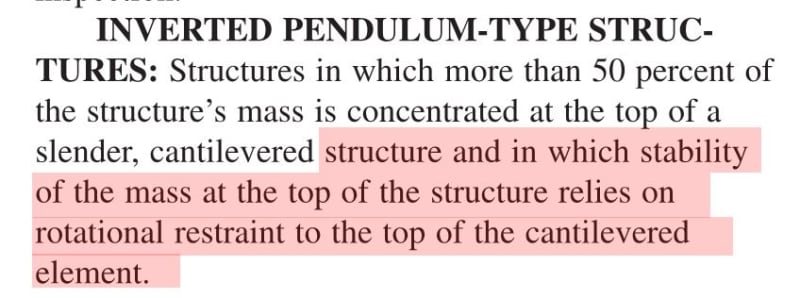I have a project that includes a look out, or viewing platform. It is a small 14'x14' structure supported on a single tube column (see attached sketch). I am looking for some guidance on which methods to use for seismic & wind design. Seismic design category D and wind speed is 120mph - exposure C.
For seismic, I first looked into using ASCE7-10 chapter 15 for non-building structures since there is an entry in table 15-4.2 specifically for inverted pendulum type structures. However, section 12.2.5.3 states that inverted pendulums need to be designed with section 12.8. I can use steel special cantilevered column systems since the height is less than 35'. What are your thoughts and/or suggestions on this?
For wind, I could look at this several ways and looking to get some consensus on this. My thoughts are listed below:
1). Use Ch. 27 Part 1
2). Use Ch. 29 - section 29.4.1 for signs
3). Use Ch. 29 - section 29.5 for other structures
For seismic, I first looked into using ASCE7-10 chapter 15 for non-building structures since there is an entry in table 15-4.2 specifically for inverted pendulum type structures. However, section 12.2.5.3 states that inverted pendulums need to be designed with section 12.8. I can use steel special cantilevered column systems since the height is less than 35'. What are your thoughts and/or suggestions on this?
For wind, I could look at this several ways and looking to get some consensus on this. My thoughts are listed below:
1). Use Ch. 27 Part 1
2). Use Ch. 29 - section 29.4.1 for signs
3). Use Ch. 29 - section 29.5 for other structures

